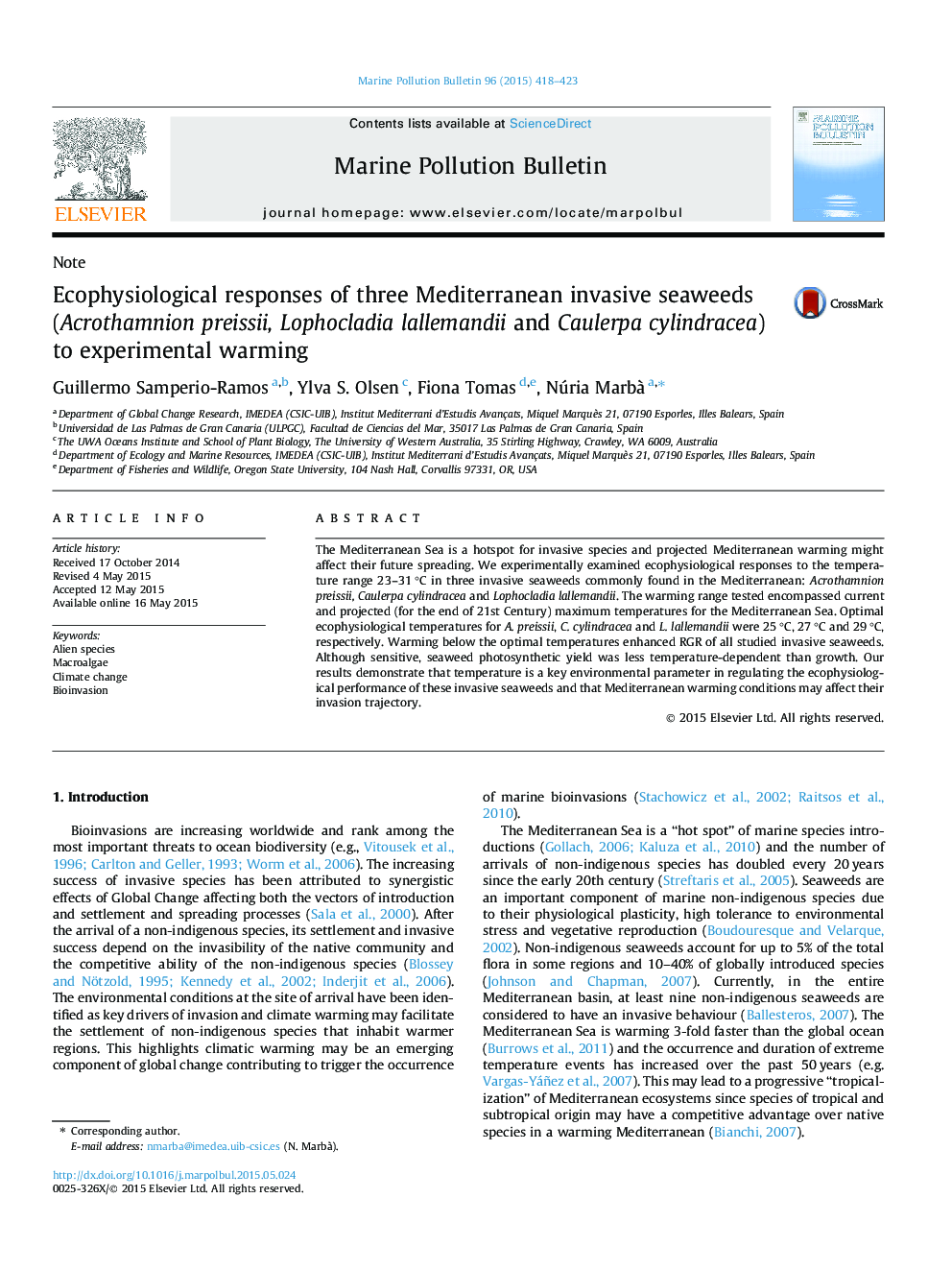| Article ID | Journal | Published Year | Pages | File Type |
|---|---|---|---|---|
| 6356621 | Marine Pollution Bulletin | 2015 | 6 Pages |
â¢We compare the thermal responses of 3 invasive seaweeds in the Mediterranean.â¢Below 29 °C, warming triggers RGR and photosynthetic yield Lophocladia lallemandii.â¢Acrothamnion preissii has the lowest (25 °C) ecophysiological optimal temperature.â¢Caulerpa cylindracea is the least dependent studied invasive on projected warming.â¢Climate change can alter the trajectory of seaweed invasions in the Mediterranean.
The Mediterranean Sea is a hotspot for invasive species and projected Mediterranean warming might affect their future spreading. We experimentally examined ecophysiological responses to the temperature range 23-31 °C in three invasive seaweeds commonly found in the Mediterranean: Acrothamnion preissii, Caulerpa cylindracea and Lophocladia lallemandii. The warming range tested encompassed current and projected (for the end of 21st Century) maximum temperatures for the Mediterranean Sea. Optimal ecophysiological temperatures for A. preissii, C. cylindracea and L. lallemandii were 25 °C, 27 °C and 29 °C, respectively. Warming below the optimal temperatures enhanced RGR of all studied invasive seaweeds. Although sensitive, seaweed photosynthetic yield was less temperature-dependent than growth. Our results demonstrate that temperature is a key environmental parameter in regulating the ecophysiological performance of these invasive seaweeds and that Mediterranean warming conditions may affect their invasion trajectory.
